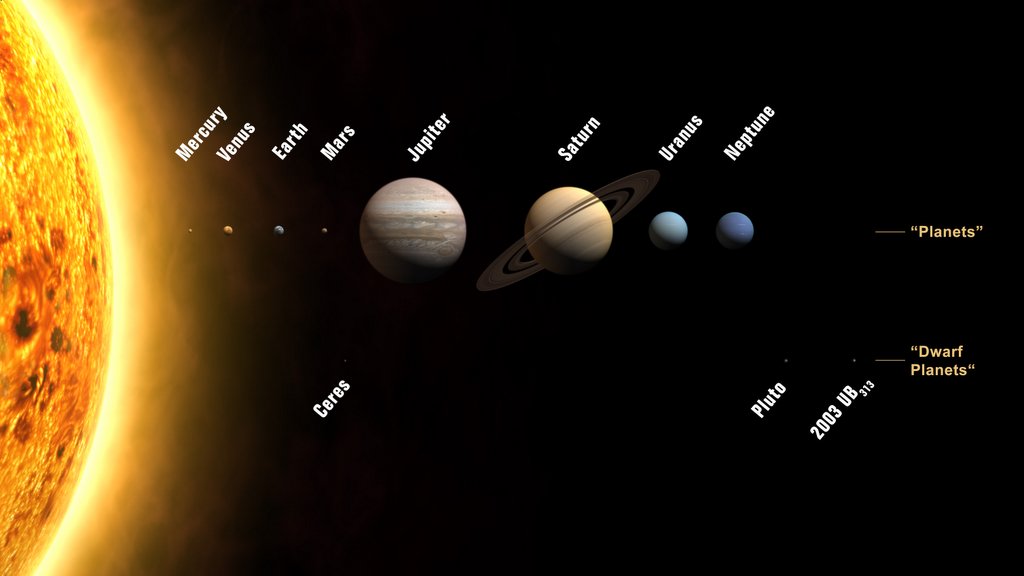On July 14, 1965, NASA’s Mariner 4 made the first successful flyby of Mars; after six spacecraft had already failed to reach the Red Planet. It passed only 10,000 km (6,200 miles) above the surface of the planet, and sent back 22 pictures. Two years later it passed through an intense shower of meteoroids, more ferocious than anything we’ve seen here on Earth. Meteor expert Paul Weigert thinks the spacecraft might have passed close to comet D/Swift, and the meteoroids came from the comet’s tail.
Continue reading “Did Mariner IV Pass Through a Comet’s Tail?”
STS-115 Brings More Power to the Station
STS-115 is an ambitious mission that returns the focus of human spaceflight to building the International Space Station, bringing new capabilities to the ISS. While a song by John Lennon asserts that revolution will bring power to the people, it will be a new set of solar arrays and its ability for rotation that will provide more power to the space station.
Continue reading “STS-115 Brings More Power to the Station”
Astrophoto: Fleming’s Triangular Wisp by Steve Cannistra
Evidence of Astronomy has been found in most ancient cultures. The Egyptians, the Babylonians, the Mesopotamians, the Chinese- and in the New World- the Mayans, the Aztecs and the Anasazi all tracked the movement of stars across the heavens. Astronomy has always been a practical endeavor arising from a fundamental need to anticipate the seasons. Astronomy’s utility didn’t stop there, however. Interpreting the motion of the stars also helped the traveler in ancient and not so ancient societies- particularly those hunting far from familiar landscapes, journeying on long trading missions or sailing out at sea without landmarks. But, in each of these long ago civilizations, what became of the individuals who made the fundamental astronomical discoveries that future generations have taken for granted?
Continue reading “Astrophoto: Fleming’s Triangular Wisp by Steve Cannistra”
Pluto’s Out of the Planet Club

Last year we had 9 planets. Recently we were informed it would grow to 12. Now we’ve only got 8. The International Astronomical Union, currently meeting in Prague, voted on August 24, 2006 to demote Pluto down from planethood status. Now Pluto, Charon, Ceres and the newly discovered 2003 UB313 (aka Xena) will merely be known as “dwarf planets”. Under the new definition, planets must orbit a star, be spherical in shape, and clear out their neighbourhood of orbital debris. Pluto has failed to fulfill the third requirement, so it’s official – Pluto is not a planet.
Continue reading “Pluto’s Out of the Planet Club”
Supermassive Black Holes Prevent Star Formation
The supermassive black holes thought to be lurking at the heart of most galaxies could create such a hostile environment around them that they prevent the formation of new stars. This is according to new research assisted by NASA’s Galaxy Evolution Explorer (GALEX). The space-based telescope observed more than 800 galaxies, and found that the larger galaxies had fewer young stars. Astronomers believe that jets blasting out of supermassive black holes could clear out gas and dust; potential star forming material.
Continue reading “Supermassive Black Holes Prevent Star Formation”
Sea Launch Lofts Koreasat 5
A Zenit-3SL vehicle blasted off Tuesday morning from the Sea Launch facility, carrying a Koreasat 5 telecommunications satellite into orbit. The launch occurred at 0327 GMT (11:27pm EDT, Aug 21), and the spacecraft was placed successfully into a geosynchronous transfer orbit about an hour later. The satellite will operate at 113 degrees east, and provide both commercial and military communications services.
Continue reading “Sea Launch Lofts Koreasat 5”
Star Formation in the Large Magellanic Cloud
This photograph is of an active star formation region in the Large Magellanic Cloud, a satellite galaxy of the Milky Way. This region is referred to as N 180B, and contains some of the brightest star clusters ever discovered. Some of the hottest stars here can be a million times brighter than our own Sun. These stars vent out powerful stellar winds that clear out nearby material and cause interstellar gas to ionize and glow.
Continue reading “Star Formation in the Large Magellanic Cloud”
New Crew Exploration Vehicle Named Orion
NASA officially announced today that the crew exploration vehicle will be named Orion. This is the new capsule that will first take astronauts to the International Space Station by 2014, and fly to the Moon by 2020. The agency also recently renamed the crew launch rocket Ares, and the larger cargo rocket Ares V. Orion will be capable of carrying 6 astronauts to the space station, or 4 astronauts to the Moon.
Continue reading “New Crew Exploration Vehicle Named Orion”
Book Review: Simple Stargazing
Learning the night sky is pretty intimidating. With enough desire and perseverance it’s achievable, even though thousands of individual stars glitter away. Trying to install that desire and knowledge into the younger crowd is even tougher. Anton Vamplew with his book Simple Stargazing provides a significant aid for just this. With a knack for detail and minimal complications, he cuts the intimidation and adds lots of fun to boot.
Continue reading “Book Review: Simple Stargazing”
What’s Up this Week: August 21 – August 27, 2006
Greetings, fellow SkyWatchers! The night is alive this week with everything from bright planets to the first sliver of the returning Moon. This is a great time to explore with binoculars or get out your telescope to pick up some challenging studies. So turn your eyes to the skies, because…
Here’s what’s up!
Continue reading “What’s Up this Week: August 21 – August 27, 2006”
